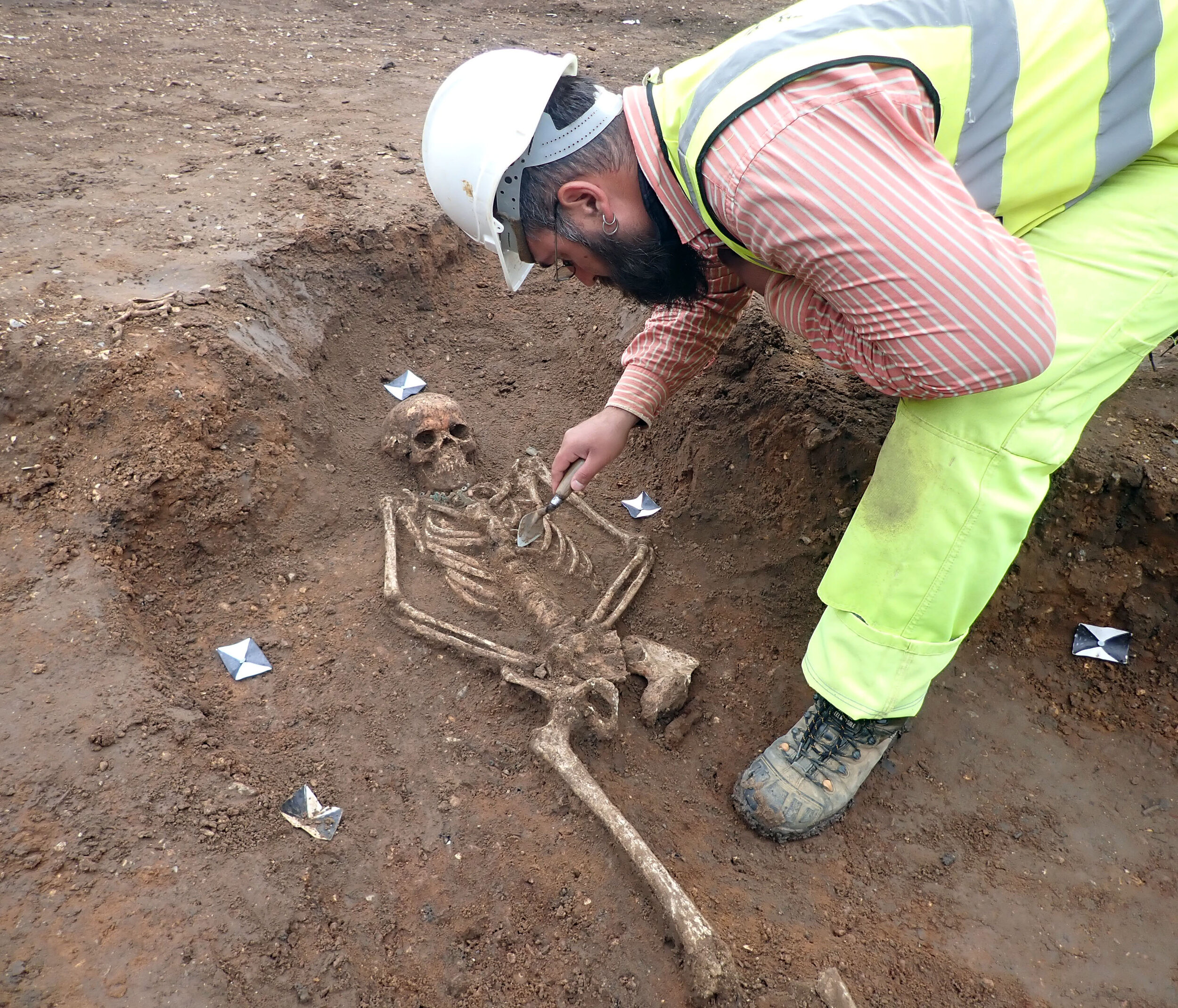Discovery of an Anglo-Saxon cemetery at Croft Gardens, Cambridge
Between September and November 2020, Albion Archaeology carried out excavations in Croft Gardens, Cambridge, following the demolition of 1930s buildings, and in advance of the construction of student halls of residence for King’s College.
Archaeological work had begun in 2015 with the excavation of trial trenches, which had identified a small number of Iron Age, Roman and 19th/20th century remains, but it was agreed that further trenching would be required to define which areas required more extensive excavation. This additional trenching took place in July 2020, after the demolition of additional buildings, and confirmed the long-suspected presence of an Anglo-Saxon cemetery.
The earliest identified remains on site were Iron Age, and comprised postholes and pits, including a small four-post structure (usually interpreted as a platform for storing grain). A series of boundary ditches also appear to have originated in the Iron Age; they remained in use throughout the Roman period, during which time an enclosure extending beyond the western side of the excavation area was established. Large pits dug along the line of the boundary ditches appear to be late Roman in date, though it is possible they date to the Anglo-Saxon period.
The most significant archaeological aspect of the site was the presence of around 70 inhumation burials, most of which have been provisionally dated as belonging to the early Anglo-Saxon period. The cemetery appears to extend to the east and north, beyond the limits of this excavation, suggesting that its overall extent is considerably larger.
The graves were on varying alignments, and most contained grave goods, including brooches, beads, weapons, glassware and ceramics. These furnished burials are typical of the early Anglo-Saxon period, and preliminary artefact dating suggests that the cemetery was primarily in use during the 5th and 6th centuries, possibly continuing into the 7th. A small number of graves were on an east-west alignment, with stone linings and no grave goods - a burial style more closely associated with the Roman period. Radiocarbon-dating of these individuals will confirm if this is the case.
The cemetery respects earlier boundary ditches, suggesting that the boundaries were still extant when it was established.
The excavations have been covered in (among others): BBC News, The Guardian, Cambridgeshire Live and the Daily Mail. A more detailed report is forthcoming, and will be published following specialist analysis.



